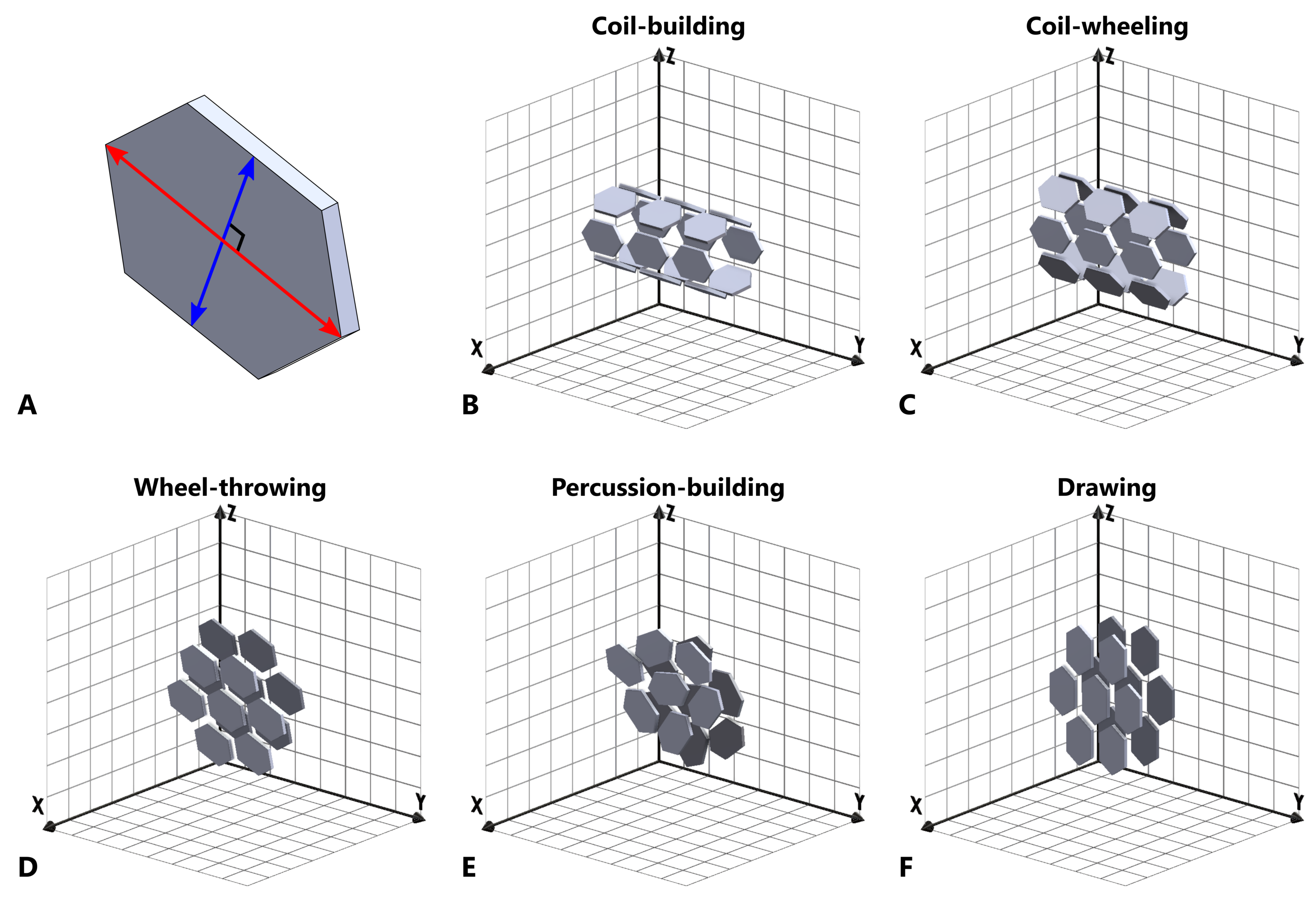Archaeological artefacts are frequent visitors at the BNC, as they are involved in numerous international and Hungarian archaeology projects. It also maintains a close working relationship with the HUN-REN RCH Institute of Archaeology.
 Proposed schematic models showing the simplified 3D orientations of hypothetical particles resulting from different forming techniques
Proposed schematic models showing the simplified 3D orientations of hypothetical particles resulting from different forming techniques
However, to the archaeologist, it’s not only those that glitter that are precious! Pottery, as one of the most abundant forms of human material culture, plays a significant role in archaeological interpretations of the past across a multiplicity of fields. Understanding how pottery vessels were shaped during the production process is of especial significance, as it reflects not only various technical parameters and necessities, but also the subjective choices made by potters in response to wider economic, social, cultural, or environmental factors. Accordingly, within archaeology, understanding the diversity of pottery technology has become a major focus of investigation.
In a recent publication, our colleagues from the BNC and the RCH Institute of Archaeology with their research partners described for the first time the use of small-angle neutron scattering (SANS) to identify ancient pottery forming techniques using the orientation of nano-scale particles and voids. Importantly, this technique has the advantages of being non-destructive and quantitative, whilst suitable for both coarse and fine-textured ceramics.
In addition to a large set of purpose-made experimental vessels, the archaeological application of SANS was demonstrated using late Roman and early medieval pottery sherds from Pannonia (western Hungary). The analysis demonstrated that a significant change in production occurred during this time, from wheel-throwing to a range of hand-building techniques with secondary wheel-shaping. These results reflect the disintegration of large-scale centrally organised Roman economic systems, and the diversification of production, consistent with the more diversified technological and cultural backgrounds of the producers themselves.
Learn more about these findings in their new open access article in Scientific Reports!




